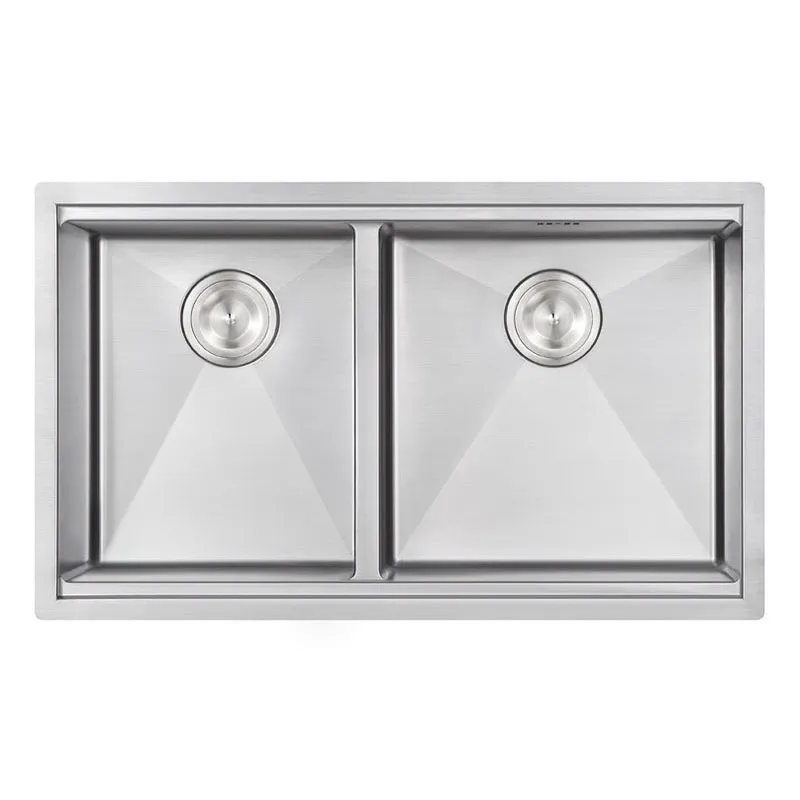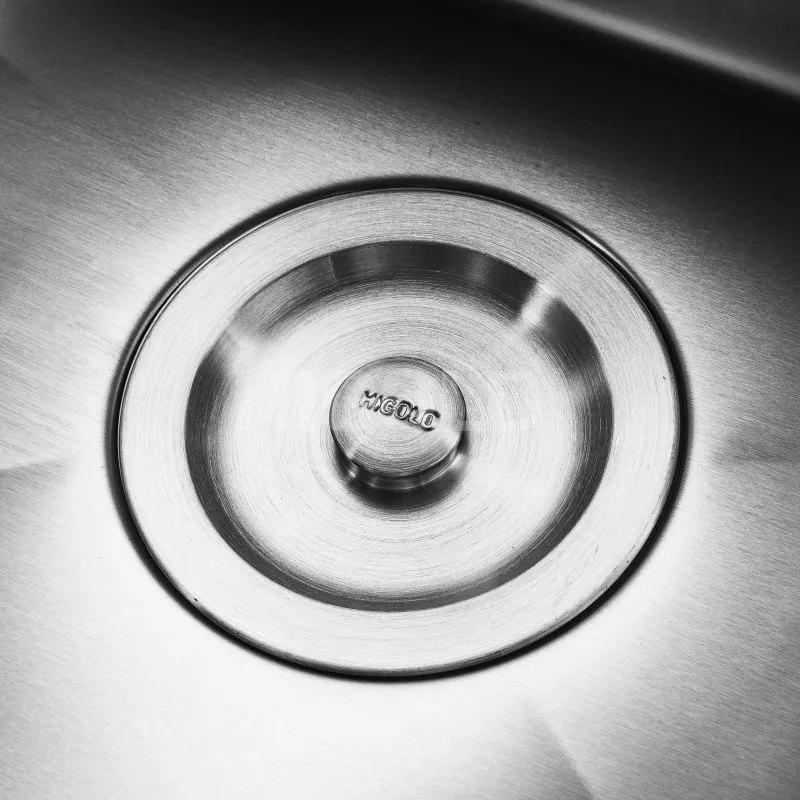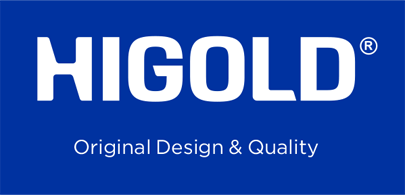Compared to traditional top-mount sinks, undermount installation not only keeps the countertop clean and seamless but also optimizes kitchen workspace.
Many consumers often ask questions when purchasing and installing stainless steel undermount sinks: Are undermount installations prone to leaks? Is sealing during installation mandatory?
This article will provide a comprehensive analysis of undermount stainless steel sinks from the perspectives of material characteristics, leak risk analysis, and sealing installation methods, offering scientific and professional guidance for home kitchen users.

Stainless Steel Undermount Sinks: Material and Structural Characteristics
1. Durability of Stainless Steel
Stainless steel undermount sinks are typically made of 304 or 316 stainless steel. 304 stainless steel has good corrosion resistance and oxidation resistance, able to withstand long-term erosion from water, detergents, salt, and acidic seasonings in daily kitchen use. 316 stainless steel is even more corrosion-resistant and suitable for high-humidity, high-salt environments.
Advantages of Stainless Steel Sinks:
• High toughness, not easily cracked or deformed
• Smooth surface, reduces stain adhesion
• High temperature resistance, can withstand hot water rinsing
2. Undermount Installation Structure
The installation method for undermount stainless steel sinks is to fix the sink under the countertop, securing it with clips, brackets, and sealant. This design completely hides the sink edge under the countertop, resulting in a smoother appearance and easier cleaning.
Features of Undermount Installation:
• The sink and countertop form a recessed design
• No obvious sink edge above the countertop
• Stable installation, high load-bearing capacity
Therefore, stainless steel undermount sinks inherently possess high strength and corrosion resistance, providing a good foundation for leak prevention.

Will Stainless Steel Undermount Sinks Leak?
From the perspective of material and structure, undermount stainless steel sinks inherently have good waterproof performance. As long as the sink material is qualified and the sink body has no cracks, it will not leak due to the sink itself during daily use.
However, leaks in stainless steel undermount sinks mostly occur at the following points:
1. Sealant Failure
• Waterproof sealant is typically used to fill the interface between the countertop and the sink during installation.
• Aging, cracking, or improper use of the sealant can lead to leaks at the interface.
2. Loose Mounting Brackets
• Undermount sinks are secured with clips and brackets. If the installation is not secure or the brackets loosen over time, uneven stress on the sink can create tiny gaps, causing leaks.
3. Uneven Countertop or Defects
• Uneven or damaged countertop edges can prevent the undermount stainless steel sink from fitting completely, affecting the seal.
4. Water Pipe Connection Problems
• Improperly installed or poorly sealed drain pipe connections can cause leaks, which may be mistaken for leaks in the sink itself.
5. Improper Cleaning or Use
• Prolonged use of bleach or strong acid/alkali cleaners can corrode the sealant, reducing its waterproof performance.
• Excessive mechanical friction or accidental impact to the sink rim can also damage the seal.
In summary, leaks in stainless steel undermount sinks primarily stem from installation and connection issues, rather than defects in the sink material itself.

Does a stainless steel undermount sink require sealing?
The answer is yes: Stainless steel undermount sinks must be sealed. Sealing not only prevents leaks but also protects the countertop and sink for long-term use.
1. The Role of Sealing
• Prevents water from seeping under the countertop, avoiding moisture, swelling, or mold.
• Prevents water accumulation at the sink connection, reducing bacterial growth and odors.
• Improves the overall stability of the sink, ensuring even stress on the clips and supports.
2. Sealing Material Selection
• Neutral silicone or a dedicated waterproof sealant is recommended, as it is water-resistant, temperature-resistant, and has strong adhesion.
• Avoid using adhesives containing acids, alkalis, or chlorine, as these can corrode the stainless steel or countertop material.
3. Sealing Construction Principles
• The sink edge should be flush with the countertop, and sealant should be applied evenly to the joint.
• The sealant thickness should be moderate, ensuring waterproofing while avoiding affecting the sink's stability.
• The sealant should be fully cured to prevent leakage if used before it is completely dry.
Therefore, sealing is a crucial step in preventing leaks in undermount stainless steel sinks.
Stainless Steel Undermount Sink: What are the Installation Steps?
Proper installation directly affects the risk of leaks and the sink's lifespan.
1. Countertop Preparation
• Clean the underside of the countertop and the sink edge, ensuring they are free of dust and oil.
• Accurately measure the countertop opening dimensions to ensure a proper fit for the sink.
2. Sink Fixing
• Secure the sink to the countertop using dedicated clips or brackets.
• Distribute the fixing points evenly to ensure balanced force on the sink and prevent wobbling.
3. Sealing Construction
• Apply waterproof sealant evenly to the sink edge.
• Press the sink firmly against the countertop, ensuring the sealant is completely filled.
• Remove excess sealant and keep the joint clean.
4. Drain Pipe Connection
• Use a sealing ring or special adhesive when installing the drain pipe joint to ensure a tight seal.
• Conduct a leak test after installation to confirm there is no water seepage.
5. Curing and Testing
• Allow the sealant to fully cure according to the instructions, typically requiring at least 24 hours.
• Clean or use only after curing to ensure optimal waterproof performance.

Stainless Steel Undermount Sink: Daily Maintenance and Leak Prevention Measures
1. Keep Joints Dry
• Wipe the sink edges and countertop dry after each use to reduce prolonged moisture retention.
2. Regularly Inspect Sealant and Brackets
• Regularly check the sink joint sealant for aging, cracking, or peeling.
• Check the fixing clips and brackets for looseness and tighten them as needed.
3. Cleaning Material Selection
• Avoid using bleach or strong acid/alkali cleaners, as these may corrode the sealant.
• Use a neutral detergent and a soft cloth to clean the sink and surrounding countertop.
4. Preventing Mechanical Damage
• Avoid striking the sink rim or countertop with hard objects, as this may damage the seal and fixing structure.
5. Leakage Test
• After installation, simulate daily use with water and observe for any leaks at the joints.
• If slight leaks are found, promptly repair the sealant or reinstall the joint seal.
Common Consumer Misconceptions about Stainless Steel Undermount Sink Leaks
1. Mistakenly believing that stainless steel automatically prevents leaks
In reality, the sink material only affects corrosion resistance; leaks primarily depend on the seal and joint installation.
2. Mistakenly believing that sealant is unnecessary
Some people believe that clips are sufficient for fixing, but leaks can still occur at the joints without sealant.
3. Neglecting the Drain Pipe Connection
Even if the sink itself is securely installed, leaks can still occur if the drain pipe is not sealed properly.
4. Assuming Routine Cleaning Won't Affect the Seal
Strong acid and alkaline cleaners and bleach, when in prolonged contact with the sealant, will reduce its waterproof performance.
Does a Stainless Steel Undermount Sink Need to Be Sealed?
Yes, stainless steel undermount sinks are inherently corrosion-resistant and not easily leak-proof, but the main risk of leaks stems from improper installation or a failed seal. Therefore, proper sealing is essential during installation.
Through correct installation, selection of appropriate sealing materials, regular inspection of connections, and scientific maintenance, households can effectively prevent leaks and ensure the long-term stability, safety, and durability of their stainless steel undermount sinks.
For kitchens that prioritize cleanliness, aesthetics, and efficient use, undermount stainless steel sinks are not only feasible to install, but also safe and reliable when properly sealed.
Does Higold’s product line only include sinks?
While Higold is most famous for stainless steel sinks, we also produce kitchen faucets and related hardware solutions. All products follow the same high-quality ODM approach, offering innovative designs and competitive pricing. Wholesale buyers and distributors can purchase complete kitchen solutions from one supplier, saving time and cost. Our factory ensures consistent quality across all product categories.


